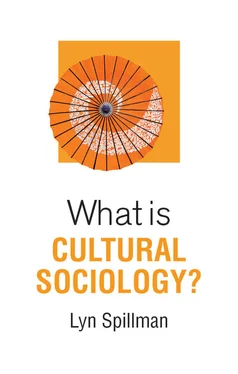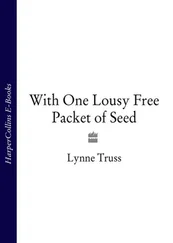Sociology teaches us about human groups and human interactions, how they work, and how they influence our lives. Cultural sociology investigates the meanings people attach to their groups and interactions. What do their groups mean to people, where do those various meanings come from, and how do those meanings influence what they do?
For all of us as human creatures, meaning is as essential to our existence as infant care or water. Our lives are full of meaning and meaning-making. Sometimes our ideas and values are totally taken for granted. We are supported and sustained by perceptions of the world which seem natural and inevitable, passed on to us implicitly by those who raise us. Our meaning-making is like breathing, and we don’t notice the air that surrounds us.
At other times – and more and more often – we encounter different ideas about what is really meaningful. Encountering differences can be fascinating and helps us learn more about ourselves. Sometimes, though, cultural differences may give us “culture shock,” and disagreements challenging the ideas we take for granted may seem like “culture wars.” Modern life makes escalating cultural difference unavoidable, even as it also offers exponentially increasing opportunities for sharing meaning through mass and social media.
Cultural sociology offers concepts and methods to help explore meaning-making – familiar meanings we share, strange and unfamiliar meanings, and those we dispute with others. To start noticing the meaning-making all around us, we can orient ourselves by thinking about different rituals, symbols, values, norms, and categories.
Rituals, symbols, values, norms, and categories
As big, splashy, intentional, repetitive events distinct from everyday life, rituals clearly highlight culture and cultural difference. Weddings, graduations, pep rallies, religious services, birthday celebrations, and patriotic holidays – all of these are ritual events expressing the meanings of our social relationships. For example, new family commitments are expressed in wedding rituals, and shared national identity is expressed in patriotic holidays like July 4th or Bastille Day.
Because rituals are intentionally distinct from everyday life, they make cultural differences obvious. For instance, while graduations everywhere mark students’ transitions to the social status of graduate, different peoples do graduations differently. In New Zealand, unlike elsewhere, a university graduation begins with a traditional Maori welcome, with a Maori man blowing a conch shell, and a “Kairanga,” or call, by two Maori women in traditional dress. The chancellor of the university then offers a welcome in the Maori language, before the graduation ceremony proceeds much as it would anywhere else in the English-speaking world. To take another example of the ways ritual highlights cultural difference, even though national holidays everywhere celebrate history and patriotism, Norway’s “Children’s Parade,” coordinated by schools in every town (Elgenius 2011, 119–22), looks different to July 4th fireworks in the United States, or the glamorous military parades and local fire-station dances of France’s Bastille Day. Other peoples’ rituals condense cultural difference and draw attention to stories and symbols their participants may take for granted as “natural.” They may also condense unfamiliar histories and traces of conflict – highlighting, for instance, the residual effects of Maori resistance to the white (“pakeha”) invasion of New Zealand in the mid-nineteenth century, or, in Norway, strategic efforts to claim Norwegian identity and independence from Sweden later in that century (Elgenius 2011, 119).
Sometimes, too, conflict and disagreement over meaning become vivid in ritual processes. A protest march with large signs and chants dramatizes political dispute. So too do celebrities wearing colors or badges supporting controversial causes while they announce prizewinners at the Oscars.
Whatever the mix of consensus, difference, and dispute in big ritual events, they make vivid assertions about the meanings of our groups and social relationships and demonstrate cultural difference. But cultural differences extend beyond the bright highlights of unfamiliar ritual. Moving into any new setting, we also encounter less obvious differences to surprise us.
We encounter different symbols . Language is often an obvious symbolic difference, but even if we share a language, new vocabulary and diction can make communicating with someone from a different subculture or region a little strange. (Should you be asking for a “soda,” “pop,” “cool drink,” “soft drink,” or even “frappé”? What exactly is a “freshman”?) And symbolic differences run much deeper than language. Many symbols are highlighted in ritual events – such as team mascots, religious images, and national flags. But symbolism also pervades everyday life. Uniforms symbolize membership of teams, schools, the military, and many workplaces. T-shirts emblazon us with our tastes and tribes. Different genders are symbolized by different clothes almost everywhere. (Why don’t most men wear skirts in Western countries? What’s the point of high heels?) Even simple colors can mean different things. (Is black more associated with death than white, or vice versa? What are the different meanings of wearing a pink ribbon, a red ribbon, or a yellow ribbon?) And consumerism creates an even more complex symbolic universe. (Which sneakers will convey the best impression?)
Shared symbols ease communication, but we hesitate and puzzle over symbols that are new to us. We might ask for an explanation of a military medal, or an unfamiliar image on a road sign or a coin or a t-shirt. If we encounter symbols that are too unfamiliar – like the social difference between wearing a toga and a tunic in ancient Rome, or the lined and dotted rock paintings of Aboriginal groups – we need to learn the meanings just as we might learn a new language. And beyond taken-for-granted consensus and unfamiliar cultural difference, symbols express power, challenge, and conflict. Crowns and private airplanes are symbols of power. A rainbow flag makes a symbolic challenge to public assumptions about sexuality. Large neighborhood murals in Belfast or Chicago are permanent reminders of longstanding political tensions.
Noticing rituals and symbols like these – our own, and those of other people – helps us reflect on culture and helps to orient us to cultural sociology. Some other common ideas are equally helpful: we can also orient ourselves to culture by thinking about values, norms, and categories.
When we evaluate something as good or bad, something else as better or worse, we are making meaning about values, and these evaluations are often moral judgements. People appeal to “family values,” or the value of “education,” and they may value “tradition” or “innovation.” What exactly these values mean in practice is often vague, and how values are applied can shift with social context. For example, do we expect “family values” to include an extended family of second cousins and great aunts, or are they restricted to the straight nuclear family? Is it controversial to include gay couples and their children? (For this reason, cultural sociologists have recently preferred to investigate the sociology of evaluation, rather than using the more static concept of values.) Regardless of how values are applied in practice, though, people often draw boundaries between themselves and others, “us” and “them,” on the basis of such moral evaluations. And along with moral evaluations, aesthetic evaluations, like taste in music, are also important for making judgements and defining groups. In fact, cultural sociologists have shown that aesthetic values are often closely linked to moral judgements, and equally important in defining group identities.
Читать дальше












